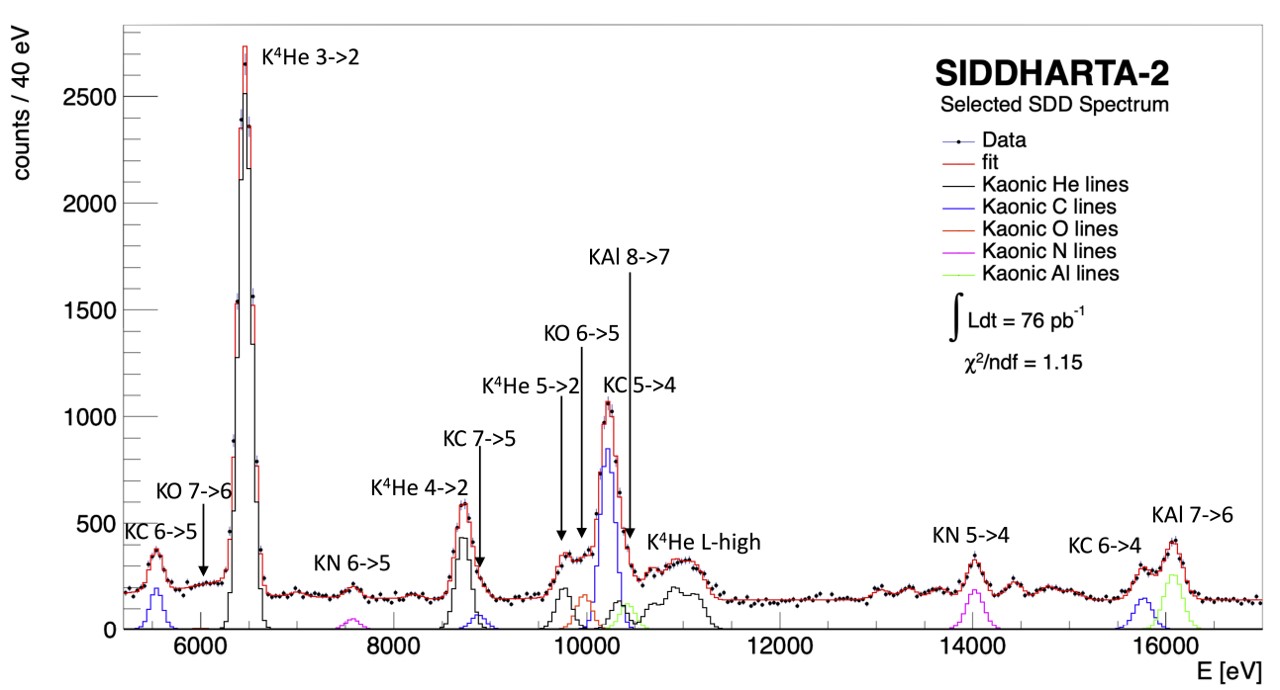SIDDHARTA-2 — intermediate kaonic atoms measurements
Kaonic atoms represent an ideal tool to study Quantum Chromodynamics (QCD) in the strangeness sector at low-energy regime, where it cannot be described with a perturbative approach. Their measurement allow a direct access to the K−N interaction at threshold, without the need of an extrapolation as in the case of scattering experiments: the relative energy between the kaon and the nucleus is already at the level of few keV.
Between 2021 and 2023, the SIDDHARTINO and SIDDHARTA-2 apparata collected 76 pb−1 of integrated luminosity measuring kaonic helium-4 (K4He) in gas target. The first run took place with SIDDHARTINO during the beam optimization phase of DAΦNE in Spring 2021 and was dedicated to optimize the collider and setup performances (link). In June 2022, a new kaonic helium measurement was performed with the complete SIDDHARTA-2 setup installed on the Interaction Point of the DAΦNE collider (link), to assess and adjust the experimental apparatus in view of the kaonic deuterium measurement, currently in progress. The spectrum obtained, after a background suppression operated with the Kaon Trigger and the VETO systems data, is shown below, together with a table summarizing the results. More details can be found in [1].


References
-
-
[1]. F. Sgaramella et al., Measurements of high-n transitions in intermediate mass kaonic atoms by SIDDHARTA-2 at DAΦNE, EUROPEAN PHYSICAL JOURNAL A 59, 3 (2023).
-
